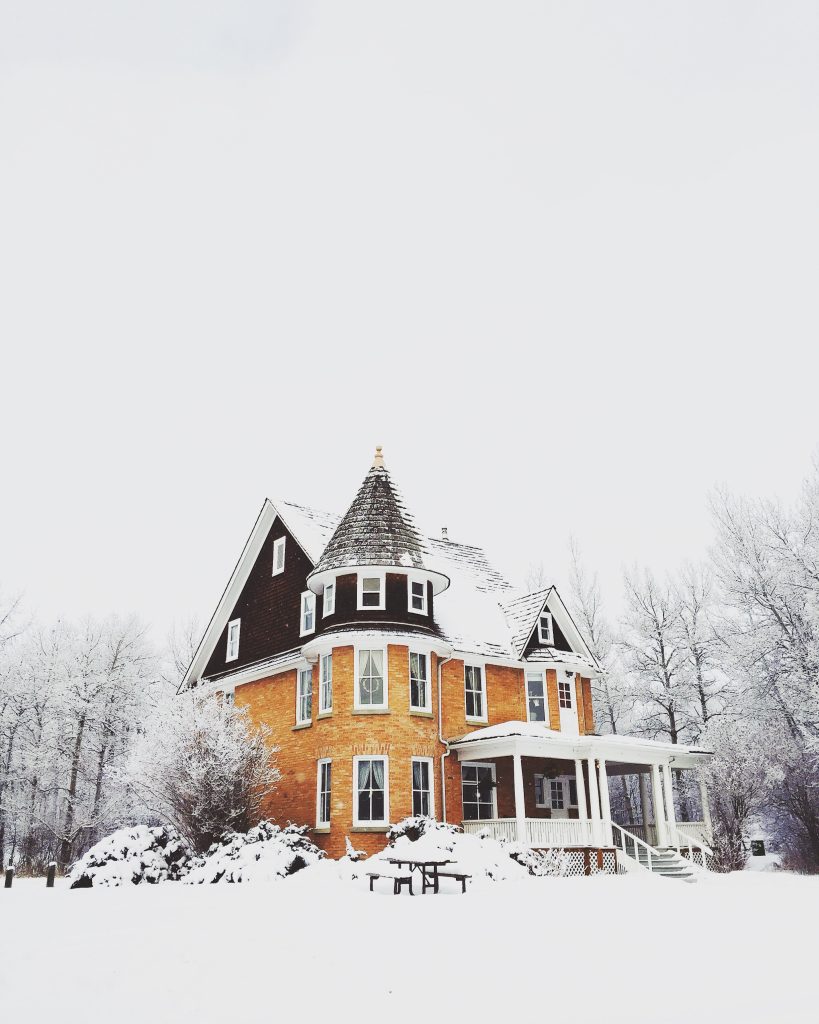Join us today as we explore the fascinating world of homeowners insurance! Discover factors that can influence the cost of insuring your home.
Average homeowners insurance costs
Depending on where you live and other factors, the average amount spent on premiums can vary drastically from state to state and even city to city. Living in a region with high real estate prices also increases the expense of replacing your house should it be destroyed. According to the NAIC, heavily populated areas had higher average premiums.
Second, the cost of homeowner’s insurance is significantly influenced by your potential vulnerability to disaster. You can anticipate paying more than someone living in an area with a lower risk of encountering a natural disaster if you reside in a region vulnerable to floods, earthquakes, or tornadoes.
Average Cost of Insurance by Estimated Home Value
According to the Insurance Information Institute’s most recent statistics, the average yearly premium in the United States in 2019 was $1,272.
Yet, the insurance costs for each home differ greatly depending on many variables, including the value of your home.
According to the most recent edition of the Homeowners Insurance Report by the National Association of Insurance Commissioners (NAIC), homeowners insurance rates for a typical all-perils policy for a single-family dwelling in the United States range from (Condos, townhomes and other non-single-family homes may have different prices):
Estimated Home Value: $50,000 to $74,999
Average Annual Premiums for an HO3 Policy: $737
——-
Estimated Home Value: $75,000 and $99,999
Average Annual Premiums for an HO3 Policy: $831
——-
Estimated Home Value: $100,000 to $124,999
Average Annual Premiums for an HO3 Policy: $890
——-
Estimated Home Value: $125,000 to $149,999
Average Annual Premiums for an HO3 Policy: $944
——-
Estimated Home Value: $150,000 to $174,999
Average Annual Premiums for an HO3 Policy: $990
——-
Estimated Home Value: $175,000 to $199,999
Average Annual Premiums for an HO3 Policy: $1,031
——-
Estimated Home Value: $200,000 to $299,999
Average Annual Premiums for an HO3 Policy: $1,132
——-
Estimated Home Value: $300,000 to $399,999
Average Annual Premiums for an HO3 Policy: $1,290
——-
Estimated Home Value: $400,000 to $499,999
Average Annual Premiums for an HO3 Policy: $1,502
——-
Estimated Home Value: $500,000 to above
Average Annual Premiums for an HO3 Policy: $2,181

Average homeowners insurance by state
It could be helpful to look over the typical home insurance prices in each state to understand better what your home coverage might cost. Natural disaster risk may be low in some states while rebuilding after a claim in others may be more economical due to the lower cost of living. In states like Hawaii, Vermont, and Delaware, home insurance with a $250,000 dwelling coverage can cost less than $700 annually, according to Bankrate’s analysis of average premiums nationwide. Still, it can cost nearly $3,000 annually in states like Oklahoma, Kansas, and Nebraska. The average price of homeowners insurance is broken down below per state.
For New Hampshire’s State residents here’s our guide on New Hampshire Home Insurance Coverage.
What are some factors that affect the cost of homeowners insurance?
One of the primary considerations for insurers when calculating homeowners insurance premiums is the location of the residence. Generally speaking, you’ll pay more for homeowners insurance if you reside in a region vulnerable to natural disasters like hurricanes, tornadoes, or wildfires because the risk of insuring your property is higher. Since homes often cost more to build in densely populated locations, policy rates are typically higher in cities than in suburban or rural areas. In addition to geography, insurers will take into account the following:
- Your ZIP code and the distance between your home and a fire station or hydrant (less than 100 feet) may result in lower charges.
- Property crime rates in your ZIP code may be more excellent if your community has many home burglaries.
The Replacement Cost of Your Home
The cost of replacing your home with similar-quality and type construction materials is referred to as the replacement cost. The rebuild value or replacement cost of your house depends on a variety of elements, including:
- Age
- Square feet
- Structural Design
- Amount of Rooms
- Costs associated with nearby reconstruction
Your policy deductible amount is another element that directly affects your home insurance prices. Your policy deductible is the amount you must pay out of pocket before your insurance provider covers the remaining loss cost when you file a claim. Simply put, your insurance premiums will be lower the larger your policy deductible is.
The age and condition of your roof may considerably impact your insurance premiums. A more recent roof is more likely to shield your house from the elements than an older one.
Because of this, insurance companies frequently offer policy reductions if your roof is less than a specific age or is made of more substantial roofing materials. On the other hand, you’ll probably pay a coverage fee if your roof is in poor condition or is older than 10 to 15 years.
If you are living in the State of New Hampshire, Massachusetts, Maine or Connecticut, then most insurance companies require a roof that is no older than 20 years. As of 2023, more & more insurance companies are taking action after an inspection is done on a home if the roof is not in good condition, which can sometimes result in a mid-term cancellation.
Although submitting one or two claims over the course of three or five years shouldn’t significantly affect your premiums, exercise caution when doing so. In order to help with financial losses in the event of accidental damage or loss, you pay for homeowners’ insurance. Nonetheless, a history of frequent claims will raise serious concerns in the eyes of your insurance company. Particularly, theft, water damage, and dog attack claims can significantly affect your policy costs.
A Home Renovation or Remodeling Project
Your home insurance premiums may be impacted by remodeling and renovation projects. Your home’s replacement cost will increase if you build an addition, remodel your kitchen, get a new roof, or put in a pool. Also, higher insurance prices are usually associated with more excellent house insurance coverage.
For instance, increasing your home’s fire danger by installing a wood-burning fireplace or stove may raise rates.
Give your insurer advance notice of any planned or recent home renovations so they can extend your dwelling coverage to include the improvements.
Higher liability protection levels are required if your property has a pool, trampoline, or other “attractive nuisance.” This raises your personal liability risk.
Most insurance providers provide liability coverage for a minimum of $100,000, however we always recommend a limit of $500,000 or more, especially if you have a trampoline or pool. Having that extra layer of protection could mean the difference between being able to afford a costly lawsuit and not having to forfeit assets to pay the settlement if a visitor has serious injuries while enjoying your trampoline or pool.
Prices may differ by state and even by the community, and the majority of house insurance providers are local. The cheapest choice for homeowners insurance in Vermont or Maine is probably not the lowest in California. The following organizations offer the most affordable homeowner’s insurance rates:
- Erie Homeowners Insurance: $979 annually
- USAA Homeowners Insurance: $969 annually (only available to active-duty military members, veterans, and immediate family members)
- Auto-owners homeowners insurance: $1,094 annually
- Nationwide homeowners: $1,075 annually
- Travelers Homeowners Insurance: $1,249 annually
How can I save on the cost of homeowners insurance?
- Getting estimates from several insurance providers is the best and most straightforward strategy to lower your homeowner’s insurance costs. When your insurance is up for renewal or if you’ve made significant modifications to your coverage, it’s extremely simple to do this.
- Another choice is to increase your deductible, which is the sum you pay out of pocket before insurance begins to pay. A cheaper rate is closely related to a greater deductible. But, it would help if you only increase your deductible to a level allowing you to cover the cost of a loss.
- Last but not least, ask for homeowner’s insurance discounts. While discounts differ from business to business, some typical ones include:
- Multipolicy discounts
- Claim-free discount
- Loyalty discount
- Home safety discount
- Roof discount
- Retiree discount
Here is a list of the top home insurance companies in New England – these insurance companies provide the best coverage options at the lowest premium in our experience:
- The Andover Companies
- Chubb Insurance
- Cincinnati Insurance
- Concord Group Insurance
- The Hanover Insurance Group
- Main Street America Insurance
- National General
- Openly
- Patriot Insurance Company
- Plymouth Rock Assurance
- Progressive
- Safeco Insurance
- Safety Insurance
- Universal Property
- Vermont Mutual
The world of homeowners insurance can seem complex and expensive. However, understanding the factors that affect costs is a great place to start when looking for coverage. Once you know how your home, location, personal items, and other factors influence rates, you can decide which policy will work best for you. It’s always important to compare quotes from multiple companies to ensure you get the most value for your money. Joining the thousands of others who have taken advantage of the available options today may be what you need to protect your home and future.
If you’re trying to find good coverage with competitive pricing, reach out to our team of licensed professional insurance advisors at Portsmouth Atlantic Insurance. We can help you with your insurance shopping needs by providing you with quick quotes, personalized policies, and more.

Contact Us today for Autoand Home solutions and learn more about how we can help. Give us a call at 603-431-4020, email at insure@portsmouthatlanticins.com or fill out the form on this page to get started.
Be sure to follow us on Facebook & Instagram to stay up-to-date on the latest news and tips in the insurance industry. We’re always sharing helpful insights and advice that can help you protect yourself and your assets.
We proudly serve residents in New Hampshire, Massachusetts, Vermont, Maine, Connecticut, Rhode Island, New York, Ohio, Illinois & Florida
